While most travellers to Europe fit the Netherlands into their itineraries at one point or another, it usually begins and ends with Amsterdam. While the Dutch capital is certainly worthy of a trip, this small yet mighty country has a lot more to offer outside of its most tourist-trodden town.
An efficient rail network and flat, easily navigable roads make the Netherlands an ideal country for exploration beyond its main tourist hub. The country runs 300km north-south and 250km east-west making a multi-city expedition not only easy, but ideal to take in the distinct regional cultures that coexist in this small nation. Its location is also perfect for exploring more of the Western Europe as it borders Germany and Belgium and is in fairly close proximity to France, UK, Denmark, and Scandinavia, at least from this North American’s perspective.
While some tourists perceive Holland as an ‘anything goes’ party spot for illicit drug use and prostitution, which inevitably does bring tourists to Amsterdam year after year, it is a superficial depiction of the country and its capital. The Netherlands is a hub for international organizations, has a diverse and complex history, showcases a mix of traditional and hyper-modern architecture, and has a proud and industrious population who maintained their Dutch culture and traditions while positioned between powerhouse neighbours.
Utrecht
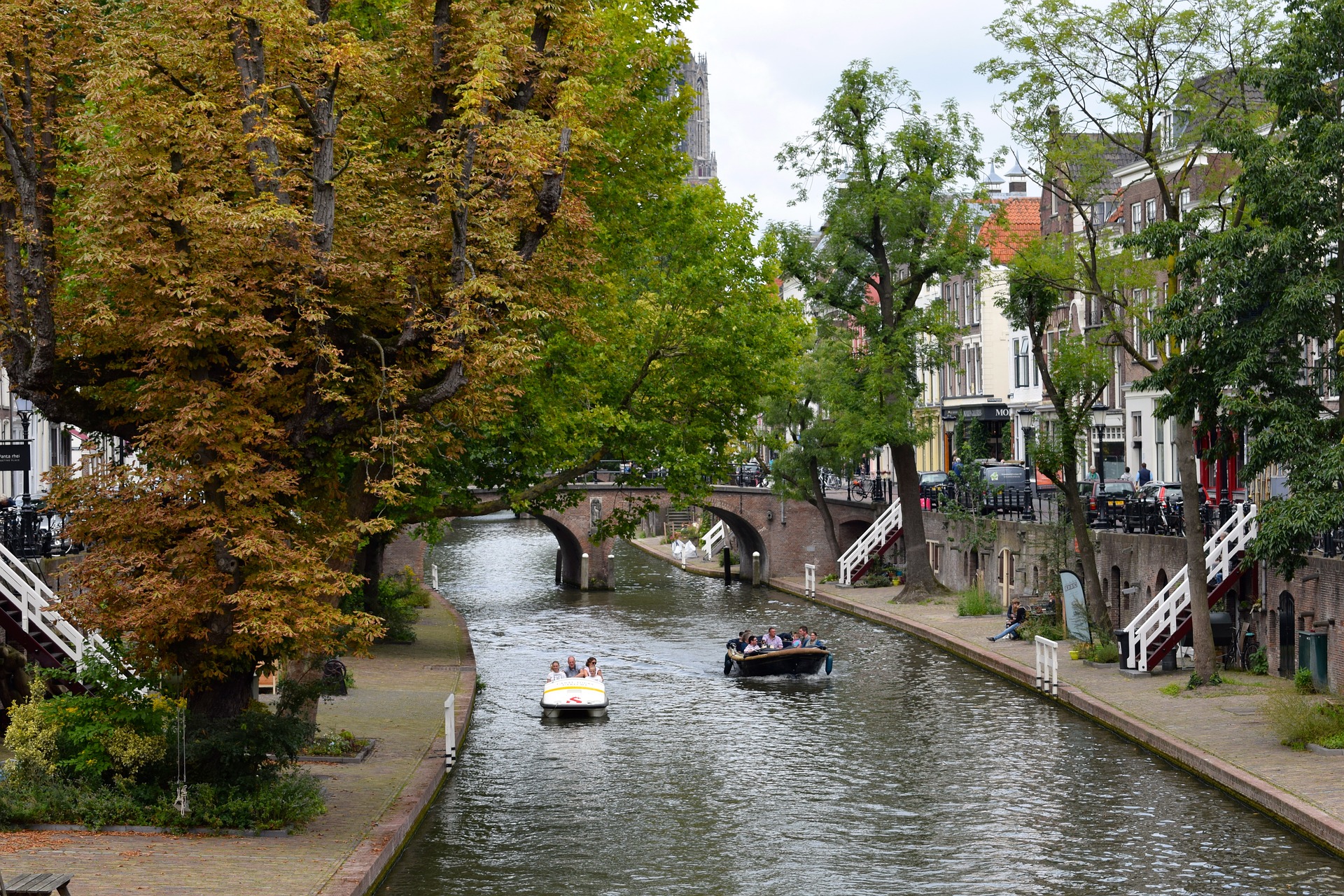
Thirty minutes from Amsterdam, Utrecht embodies many of the elements beloved in the Dutch capital; unique architecture, flowing canals, sidewalk cafes, and bikes galore; but without the hordes tourists, at least for now. Lonely Planet recently recognized Utrecht’s ‘off the beaten path status’ by including it in its top ten list of the world’s most unsung places.
While Utrecht is one of the country’s more populous cities, a significant proportion of residents are students from Utrecht University, the Netherland’s largest postsecondary institution. The dominant student population, and large international contingent, ensure both a youthful vibe and a bustling nightlife.
Founded in 47AD, Utrecht is one of the Netherlands oldest cities and has a well preserved medieval town centre with cobblestone streets, many of which are pedestrian only, and the Oudegracht, a sunken canal that transects the downtown core. Aside from many shops and restaurants, this is also where you’ll find the Dom Church and Tower, whose construction began in the 13th century. Visitors can take a guided tour of the tower, which allows access to the top deck for fantastic views of the city and surrounding area.
Utrecht comes alive in the spring and summer when patrons of the many restaurants and cafes spill out onto the streets to enjoy a fluitje (small beer) in the sun. Many restaurants and bars are scattered along the Oudegracht or in the Neude, a town square in Utrecht’s old centre, both of which are good spots to base yourself for a fun night. Head to Wilhelmina park to lounge alongside locals when the weather is pleasant, best enjoyed with a picnic spread of meats and cheeses and a couple of beers to wash it all down.
Maastricht

As the most southern city in the Netherlands, Maastricht has a distinct vibe from other Dutch cities with noticeable French and Flemish influences. A Roman settlement built up under Caesar Augustus, Maastricht is argued to be the oldest city in the Netherlands.
Maastricht, cut in the centre by the Maas river, is a compact and walkable city with many high-end shops, gourmet restaurants, and traditional Dutch brown cafes to peruse. Head to the energetic Vrijthof, the city’s main square, for a local pilsner at one of the many sidewalk cafes. If you’re lucky enough to visit during Carnival in February, you won’t need to venture far from the Vrijthof, which is body to body with costumed people enjoying the company of boisterous strangers.
While in the area you’ll catch of glimpse of Maastricht’s two dominant churches, the Protestant Sint Janskerk juxtaposed against the Catholic Saint Servatius right next door. Best viewed on an evening stroll when lights brilliantly illuminate both buildings. Since you’re in the area, don’t miss the recently repurposed Dominican church. This long under-used cathedral, which has functioned as a warehouse, archive, and bicycle parking lot, is now recognized as one of the world’s most beautiful bookstores: Selexyz Dominicanen.
Learn about Maastricht’s extensive history by visiting the Grotten Zonneberg (“St. Pietersberg Caves”), a vast underground network of thousands of tunnels. Originally used by the Romans to mine the limestone that developed tens of millions of years ago, the caves were equipped to house the entire city in case of evacuation during WWII. The walls of the cave are decorated with intricate illustrations, providing a glimpse into the city’s history over the past several hundred years. Animal skeletons have been excavated from the limestone, including the first recorded Mosasaurus, a sea dwelling carnivore that lived around 70 million years ago.
Rotterdam
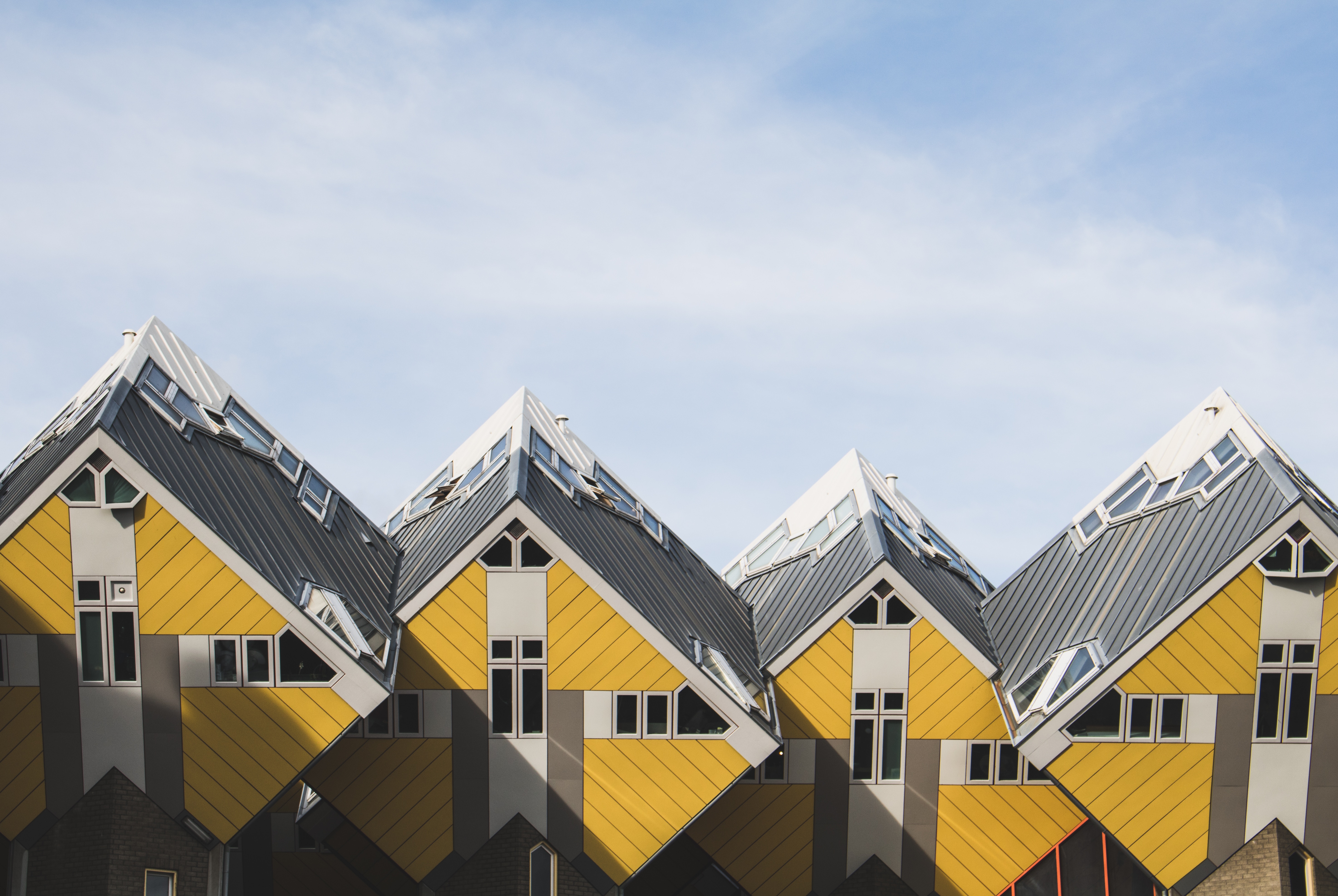
I’ve heard more than once that Rotterdam, Holland’s second largest city, isn’t worth visiting, but I couldn’t disagree more. It was essentially flattened during WWII due to its strategic importance as one of Europe’s largest ports, and the city has been almost entirely rebuilt in the decades since. While many European towns that were similarly bombed replicated their destroyed buildings and crumbling monuments when they rebuilt, the people of Rotterdam had a more ‘out with the old, in with the new’ philosophy, ushering in an era for modern and avant-garde architecture.
So while you won’t see much of the traditional Dutch building style so prevalent in the rest of the country, you’ll witness some of the most unique architecture in the world as Rotterdam has redefined itself as one of the leading, and most daring, cities for urban design. Embark on your own architecture tour of Rotterdam, hitting highlights such as the Cube Houses, Markthal, De Rotterdam, and Erasmus bridge.
Rotterdam is in a constant state of evolution and, like many industrial cities, has a strong independent spirit and burgeoning arts scene fuelled by its ongoing renewal. To see one of the latest iterations of this, check out Fenix Food Factory, an abandoned warehouse along the harbour that’s been converted into a laid back mecca for local food and craft beer.
Take advantage of Rotterdam’s diversity, it is the most multicultural city in the Netherlands after all, and venture away from the typical Dutch food that you can get in abundance across the country. Indulge in Mediterranean and Middle Eastern fare at Bazar, Vietnamese banh mi at Boguette, and nasi goreng at Indonesian eatery Warung Mini. Don’t miss Holland’s largest China Town while you’re at it.
Leiden

Leiden is a small city, even by Holland standards. Yet with almost one quarter of the population comprised of students at the Netherland’s oldest university, it’s an energetic and vibrant town. What Leiden lacks in geographical area it makes up for in charm, which it exudes in abundance. The town is as picturesque as a postcard with rows of traditional Dutch style homes and buildings from the 17th century intermixed amongst manicured gardens and the odd windmill.
Leiden is built along the water and both the smaller canals that circumvent the medieval centre, and the larger Rijn River, are traversed in the warm weather by fun loving locals lucky enough to own their own boat (or tourists with enough foresight to rent one).
As the birthplace of Rembrandt, Leiden prides itself on being a cultural hub in the Netherlands. The city boasts dozens of visit-worthy museums, most within the compact centre of town. Head to the Rijksmuseum voor Volkenkunde for an ethnological overview of the world’s indigenous cultures, the Stedelijk Museum De Lakenhal to get a glimpse into the city’s history and the importance of the textile industry on Leiden’s development, and Museum Naturalis, which offers thousands of fossils and taxidermy of both prevalent and extinct creatures.
During the Spring and Summer months, Leiden is in full festival mode. The most epic is the Lakenfeesten, a four day symposium of events in June encompassing a high-end culinary festival, a dragon boat competition, lots of live music, and a whole lot more.
Den Haag (The Hague)
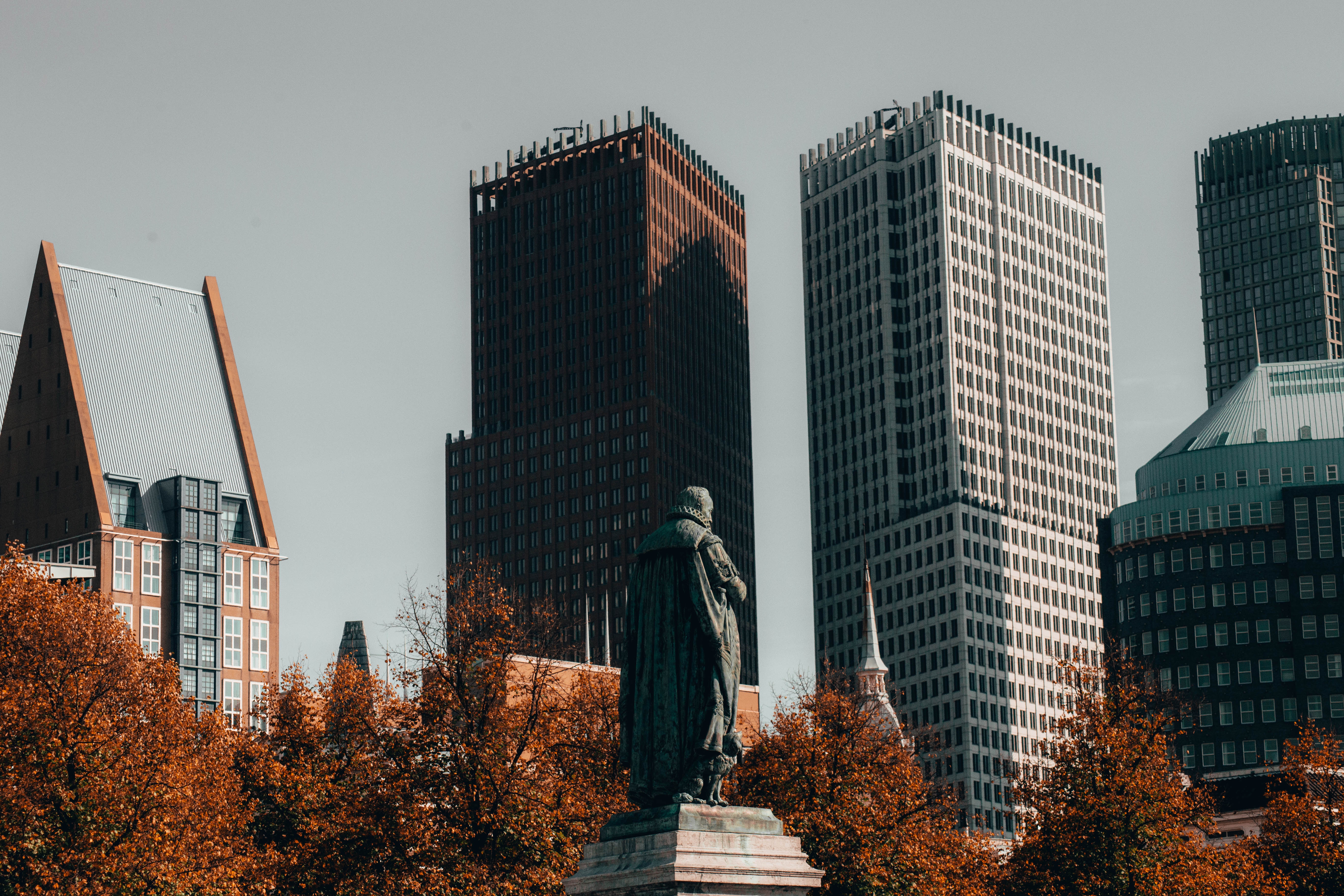
As the seat of the Dutch government and the International Criminal Court, The Hague is a beacon for global perspectives and global organizations, inevitably attracting an abundance of expats. But don’t be discouraged if politics, law, and international business aren’t your particular areas of interest as The Hague offers plenty more to those who give it a chance.
The Hague evokes an elevated sense of culture and sophistication relative to its Dutch sister cities. Tucked within the streets of the town are a number of central squares, where residents have congregated for hundreds of years. Wondering the city you’ll uncover a diverse range of architecture, from the 13th century Binnenhof, which houses the Parliament, to the 16th century Old City Hall, and the grandiose 18th century town houses that line the squares.
For those looking to incorporate a little art into their travels, stop by the Mauritshaus, one of the premiere art galleries in Europe. Paying homage to the Dutch Golden Age of painting, the gallery houses important works by Vermeer, Rembrandt, and Rubens. The most infamous of them all is ‘Girl with a Pearl Earring’ by Vermeer, who lived and worked in Delft, which at only a 15 minute ride from The Hague is worthy of a few hours stopover.
Locals flock to the resort area of Scheveningen, a district of The Hague, to splash around in the cool waters of the North Sea in warm, and not so warm, weather. The beach and waterfront hold several festivals and events over the summer such as regattas, pop music festivals, and carnivals. The trendy Scheveningen Harbour is the perfect place to spend a pleasant day, with a wide range of restaurants and activities. To go back in time, visit the Mesdag Panorama to experience what Scheveningen was like well over a hundred years ago.
Groningen

Located in the north of the Netherlands, Groningen isn’t the largest city in the Netherlands but it certainly packs a punch. Known in Holland as the “Metropolis of the North”, Groningen buzzes with energy and offers an endless array of sights and activities making it a compelling travel destination. Moreover, a recent study by the European Commission revealed that Groningen residents were amongst the happiest in Europe, so expect a warm welcome.
Like many Dutch cities, Groningen has a canal, which frames the centre core. Locals take full advantage of it year round, boating it in the summer and skating on it when it freezes completely during winter.
Groningen offers an abundance of cultural activities that will satisfy any traveler’s interest. The visually striking Infoversum is a 3D dome movie theatre with a focus on scientific content, essentially a hybrid cinema-planetarium that will excite visitors of all ages. If you’re more into the outdoors, be sure to visit the Prinsentiun (“Princess Gardens”), a natural oasis in the middle of the city. The Dutch take great pride in their gardens, and this one is no exception boasting a range of flowers, plants, and herbs, as well as a fascinating sundial. For a perspective on its history, visit Martinitoren, a church that was built in the 1400s. Walk up the 260 steps to the top viewing deck for sweeping views of the city and surrounding area.
Expect a booming nightlife when you visit as Groningen is another of Holland’s major student cities. In fact, the dominant student population contributes to the city having the youngest average age in the Netherlands. If you’re down to party, your best bets are by the Grote Markt and Poelestraat where there are a high concentration of bars and clubs.
Well there you have it. These are my recommendations for exploring the Netherlands though you really can’t go wrong. Go out, explore the country’s towns and cities and make sure to share your favourite spots in the comment section below.
Make your next trip the best one.
Departful is a full service travel agency creating truly exceptional travel experiences that are 100% personalized to you. Wherever you’re going, whatever your interests, we help you plan the perfect trip.
Lauren
Lauren co-founded Departful in 2012 and is the Managing Director of Departful Media. Since then she has worked between North America and Europe and has published content in partnership with a variety of tourism boards and businesses based around the world. Lauren is currently based in Toronto, Canada.
More travel inspiration from Departful
3 Comments
Add comment Cancel reply
This site uses Akismet to reduce spam. Learn how your comment data is processed.


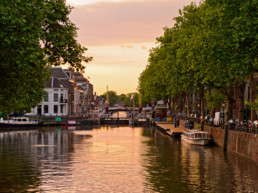
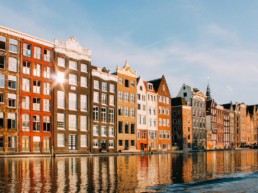

My personal experience from my one week business trip shows that Amsterdam is the most ridiculous place in Western Europe at all.
Huge crowds of people collides with numerous reckless dangerous high speed bicycles on everywhere. Millions of, useless or abandoned bicycles are scattered everywhere and occupying any square inch of the downtown.
The architecture in the city center is total madness. The streets are so narrow, that you constantly must be on high alert not to collide with something, person or crazy bicycle.
Much to my surprise the local citizens doesn’t look like Europeans, they have dark or brown skin and black curly hairs. The local women typically wearing headscarves.
Many people on the streets are drugged or drunk or simply homeless. Most of them are poor or unemployed. Terrifying smell of marihuana is spread everywhere around. Local citizens ride a rubbish bicycles probably because of the poverty there. Even a newly born babies are transported in something like red coffins mounted on the bicycle.
On every corner, on the airport, train stations and the public places there are warnings for pickpockets!
In spite of all, the public transport is well organized and relatively cheap but most of the locals simply can’t afford to buy a ticket.
I do not recommend to any normal person to take there even a step.
Once again these are my observations only and there is nothing offensive here.
All the Best!
Hmmm…so what you’re saying is that you didn’t enjoy Amsterdam?
Most bizarre comment I’ve ever read, firstly, Dutch people in general are anything but poor, the rules for salaries and even those on benefits is amongst the best in the world, they have a structure for everything, and those bicycles you mention, some of those tatty looking this cost in excess of €1000, remember these are not usually for recreational or sporting purposes, they are a mode of transport and are built for comfort, and for carrying goods, which they do perfectly, Amsterdam is amongst the busiest cities in Europe when it comes to tourists, many of whom come to take advantage of the liberal approach to soft drugs, saying that you could smell marijuana in Amsterdam is like saying you saw a car on a motorway, it’s hardly been kept a secret, in short, it appears that you done very little research when planning your trip, and now have an axe to grind, Amsterdam and The Netherlands in general will continue to thrive with or without your misinformed views, stereotypical rants and downeight snobbiness, I can only assume by your tongue that you are an American, though I may be wrong, if so, kindly attend to the overwhelming problems that are plaguing your own country and get your own house in order before you criticise others, especially those that are run better than your own.